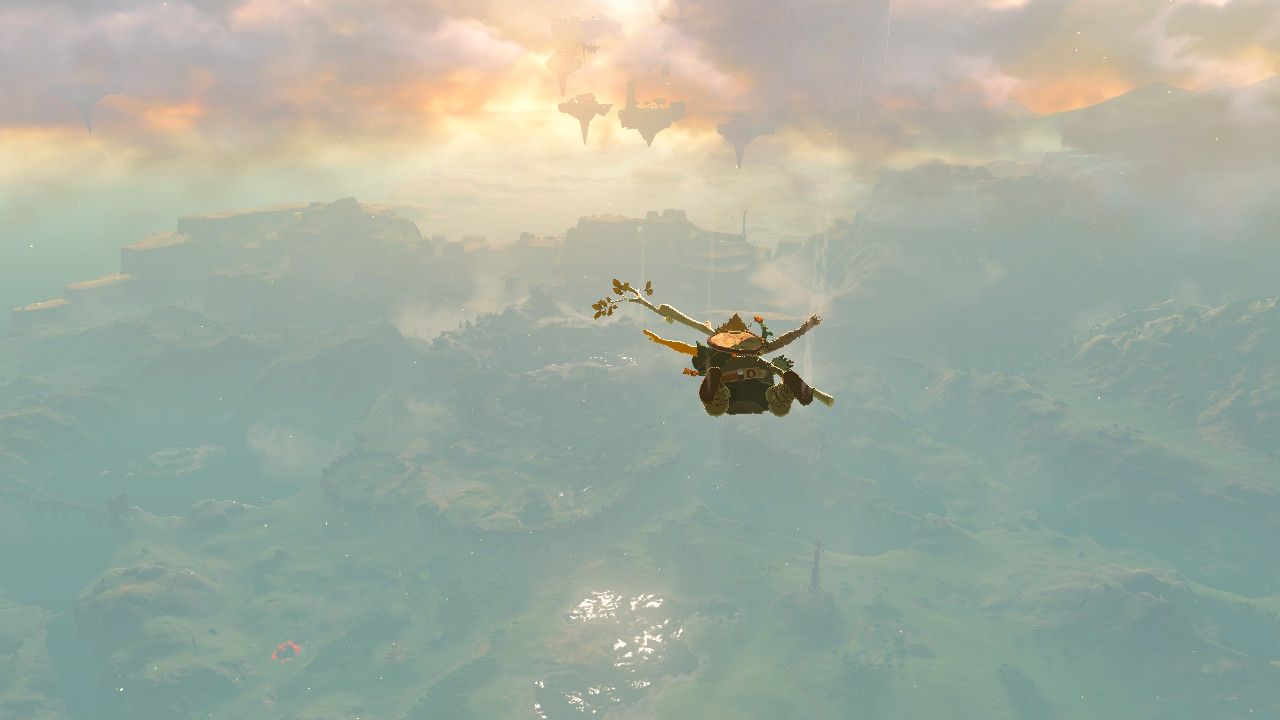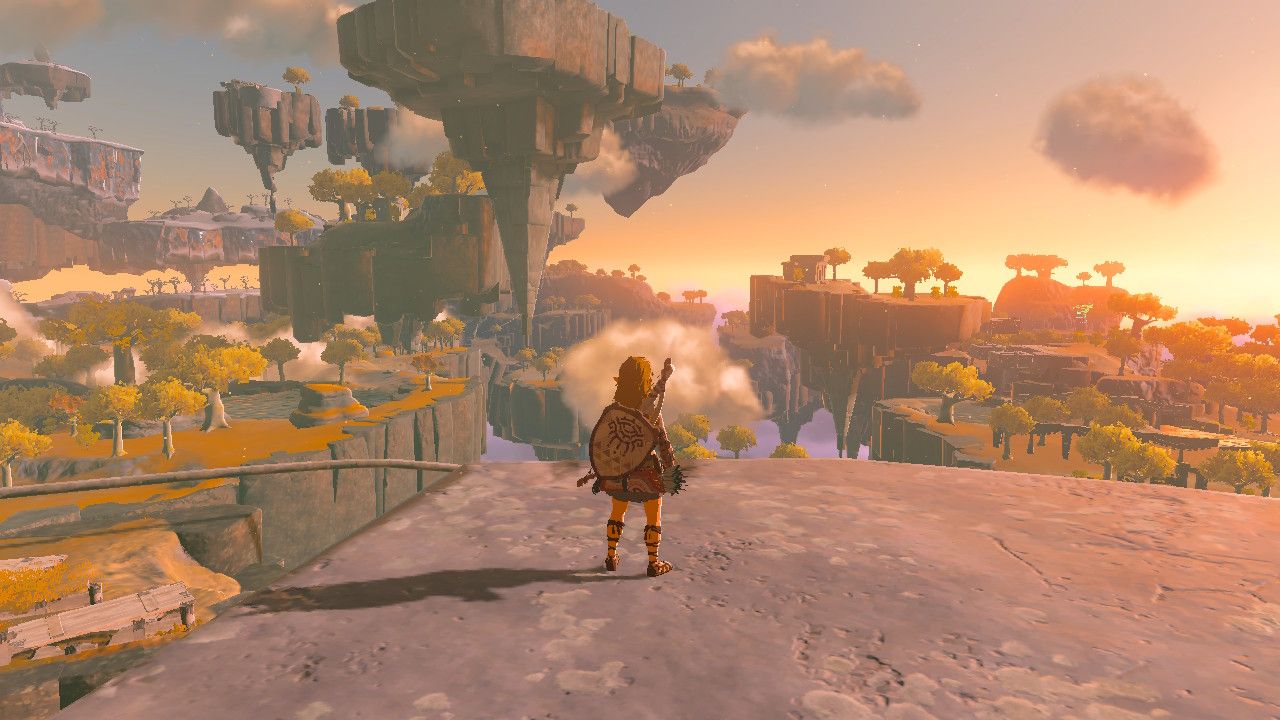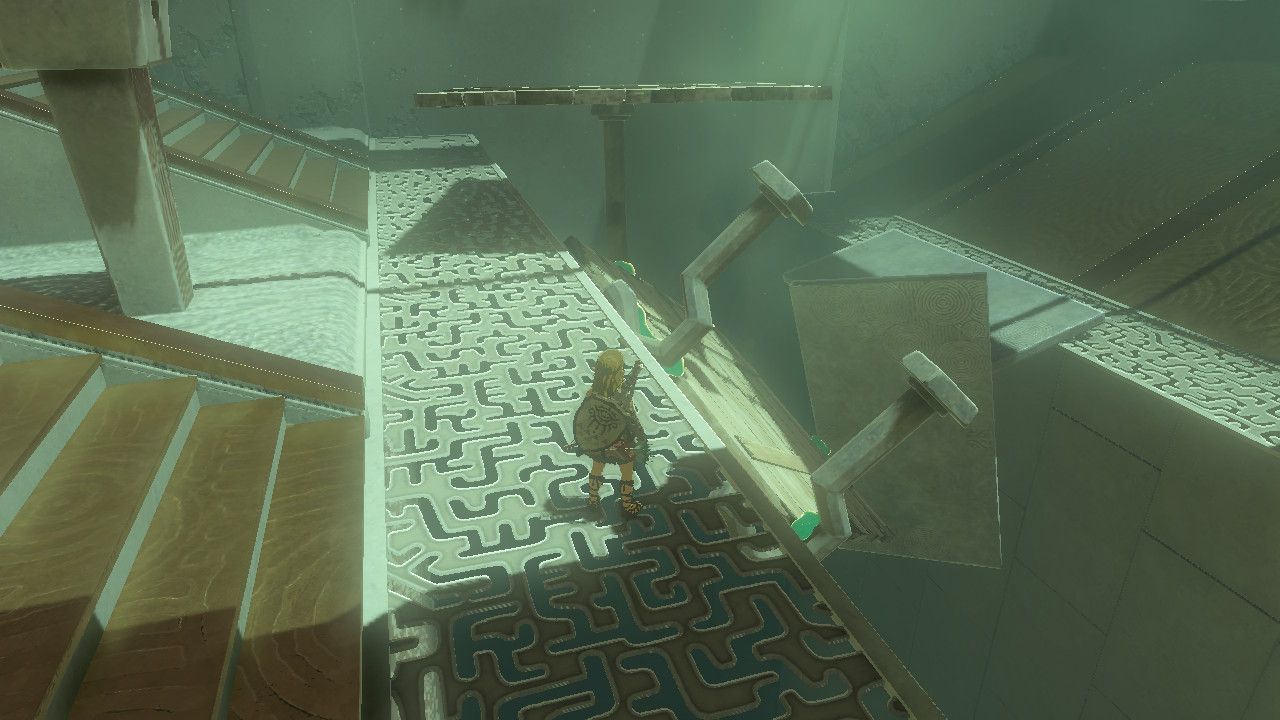Posts
On The Legend of Zelda: Tears of the Kingdom
You dive off an island, miles up in the sky. As you rapidly descend to the world below, you notice something striking -- Hyrule has changed. What once a beautiful and luscious green landscape is now covered with a strange red-black substance, surrounding seemingly bottomless chasms. Ruined buildings are everywhere. Once populated cities now scarcely contain more than a handful of people, with strange monsters terrorizing the land.
Welcome to The Legend of Zelda: Tears of the Kingdom.
As of this article, I have played the game for 65+ hours. Yet, I still feel like I've barely scratched the surface of what it has to offer. Tears of the Kingdom is an example of what happens when you give an AAA game studio 5-6 years of development time to focus strictly on building the highest quality game possible, with minimal attention paid to pushing the technological envelope or building an in-house engine. In short, you get a sprawling game that is both as deep as it is wide.
Compared to the previous game, Breath of the Wild, the gameplay mechanics just feel tighter. The world is easier to navigate. The combat feels more precise. But perhaps the most prevalent mechanics are the new Zonai abilities Link has at his disposable. The Ultrahand and Fusion abilities are the most notable ones, allowing Link to combine materials together within the environment, and to his weapons/shields respectively. Now, I'm not the most creative when it comes to using Ultrahand, but building hot air balloons and rafts to traverse the environment is useful, intuitive, and most importantly fun. More creative individuals than I have come up with some pretty crazy things, a quick search through YouTube suggests. The Ultrahand name itself is also a nice reference to Nintendo's toy of the same name from the 1960s.
Weapons and shields usually have pretty average stats, so utilizing Fusion to combine them with items such as Moblin Fangs or Lynel Horns is essential to maximize their potential. In fact, there's a ton of creative combinations you can come up with. Combine an arrow with a Keese Eye? Your arrows will now home into the enemy! Fuse a sword with a mushroom? Hit an enemy and they'll bounce into orbit. Put a Zonai flame emitter on a shield? Now you have a shield that shoots out fire when you block. And this is only a small fraction of the possibilities available. The only real limitation is your own imagination, and the items you have at your disposal.
The remaining two abilities -- Ascend and Recall -- are generally less often used, but incredibly useful nonetheless. Ascent makes climbing out up mountains and out of caves a breeze. The ability started life as a debug tool to allow the developers to not have to backtrack through caves, but they left the ability in the game when they realized how fun it was to use. Ascent makes backtracking and ascending environments much simpler.
Meanwhile, Recall lets you rewind time on almost any object in the game. This is useful for things such as puzzle solving (climbing up a stream by getting on a raft and having it travel back the way it came), and less obvious things like using to send an arrow an enemy has fired back at them. These tools make the world the player's sandbox, where nothing is off limits or too crazy to try. Experimentation is constantly encouraged and rewarded.
Despite being the same world from Breath of the Wild, the world feels more dense, with more things to do; in fact, though the world may be on the brink of collapse, it ironically feels very much alive. You'll run into sidequests routinely; however, compared to a lot of modern RPGs, you won't always have a quest marker pointing you on where to go. Some quests will, but a good majority of them will point you in a relative direction, and you will have to deduce what to do and where to go based on the quest description. It actually reminds me a lot of how The Elder Scrolls III: Morrowind handled quests. Landmarks and geographic features don't just exist for aesthetics, but to also both pique the player's curiosity, and give a bearing of their surroundings.
Hyrule has also grown vertically. Above Hyrule you have the various islands in the sky to explore. These islands not only act as gorgeous vistas, but are full of secrets and areas to explore. Not only are the islands a joy to explore (with tons of secrets, shrines, and even temples to explore), but Link can easily access most of Hyrule from here with his paraglider.
Below Hyrule, you have the depths. Admittedly, traversing the depths is interesting than exploring the sky. Constantly lighting up small sections of the cave with bloomseeds just to see where you are going gets tiring quick, as is dealing with avoiding the gloom. While Link is exposed to gloom, it will temporarily decrease his maximum health until he reaches the surface or another potent lightsource. It's not inherently bad, and there are a lot of interesting secrets to discover, but I more often than not found myself wanting to get back up to the surface as soon as possible.
Shrines return from Breath of the Wild, and continue to be a masterclass in game design. Never before have I simultaneously felt like a genius for figuring out how to bypass the intended mechanics of a shrine, and also an idiot for not figuring out the intended solution. The shrines often act as a sandbox, with an intended way to solve the puzzles presented. I do seem oblivious to these solutions though, and often end up abusing the game's physics and mechanics to finish them. But that's what makes them so well designed -- there are countless unintended ways to solve the puzzle, and nothing is stopping the player from exploiting the game design to go about this.
Dungeons are fun, but not nearly as interesting as the shrines. Dungeon design and boss battles are more complex compared to Breath of the Wild's Divine Beasts, with a greater focus on the utilizing the particular sage mechanics to navigate and solve a multitude of puzzles. At the end of the day though, the dungeon gimmicks boil down to finding 5 of x thing to unlock the boss fight. These dungeons are relatively small and don't reach the complexities of past titles in the series, but are generally a fun experience that I was always excited when I stepped foot into a new one.
Perhaps what surprised me most in Tears of the Kingdom is how difficult the game is. Not From Software's Dark Souls hard, but easily the most challenging 3D Zelda game since at least Majora's Mask. As an example, if Link decides to charge up an attack or swing a heavy weapon, more nimble enemies will take advantage of this and attack Link while he is vulnerable. If you manage to knock a weapon out of their hands, they'll start scavenging the environment for something that they can use as an alternative. If you try to escape by climbing up a mountain or building, enemies may throw rocks to knock Link down. It's a constant game of rock-paper-scissors to see who can get the upper hand. This keeps the fights engaging throughout the entirety of the player's time with the game.
Finally, the soundtrack deserves special mention. Building off the piano driven themes from Breath of the Wild, the soundtrack perfectly encapsulates the atmosphere of adventuring through a Hyrule that is on the cusp of falling apart. The music's dynamicism and adaptiveness in particular carry over. There are soft, whimsical piano ballads, along with dissonant, bombastic pieces that capture a spectrum of emotions. Sometimes these two moods juxtapose each other in the same piece. Music will fade in and out, changing in rhythm and tempo to match the current state of the world. Engaging in a battle with enemies will result in the music becoming much more intense. Meanwhile, exploring the a tranquil, empty field will has the music fade into the background, with only light bits of piano and strings surfacing to create ambiance.
As I continue to play through the game, I've come to the realization that Tears of the Kingdom may not just be my favorite Zelda game of all time (or at least just behind Ocarina of Time), but one of my favorite gaming experiences ever. There's little to limit where you can go or what you can do, but just enough structure to set a solid foundation and sandbox in which to play in. It's fun to get lost in a world and enjoy it at your own pace, exploring as much or as little as you want. There's always a new quest, a new adventure, a new experience waiting over the horizon. These qualities render Tears of the Kingdom a fantastic game that cements itself as a modern classic.
A software engineer who has a life-long obsession with videogames. Enjoys all sorts of programming and tech; also an avid coffee lover.


